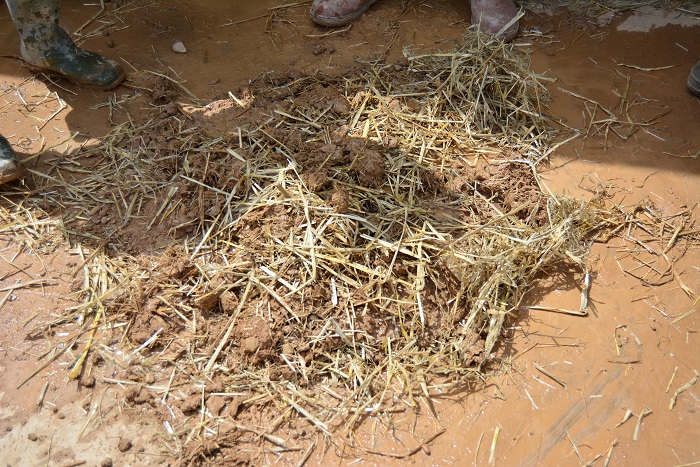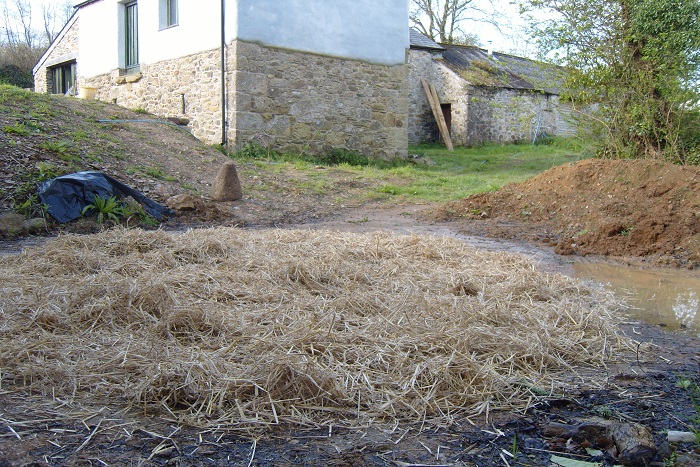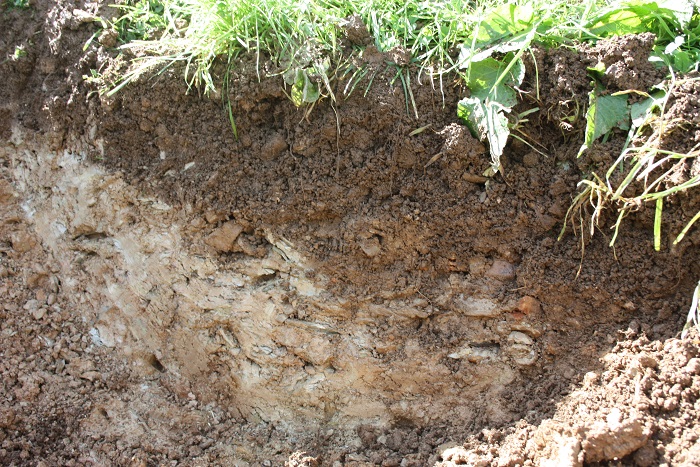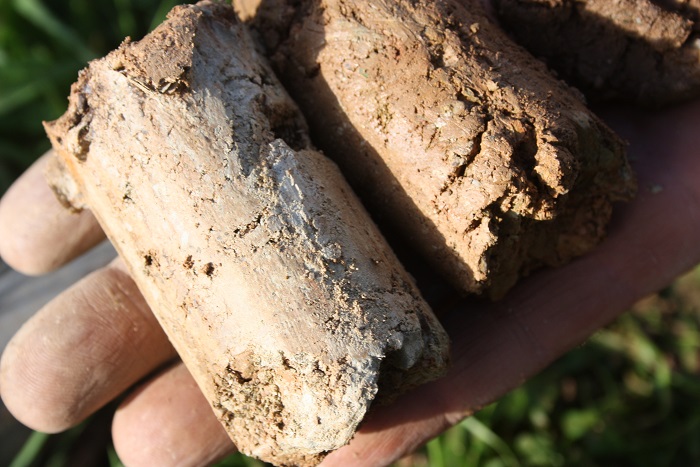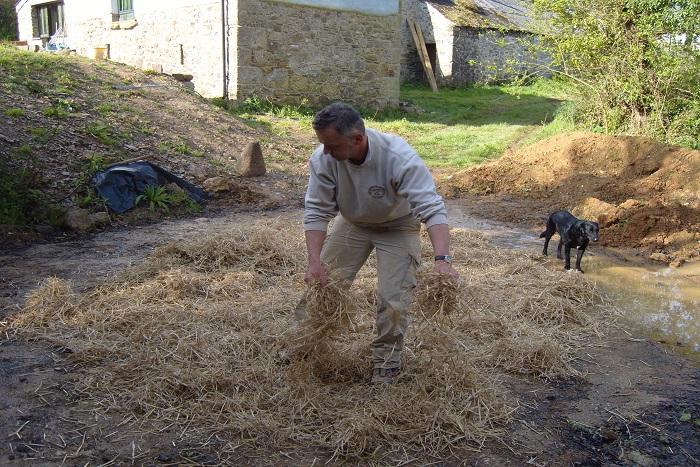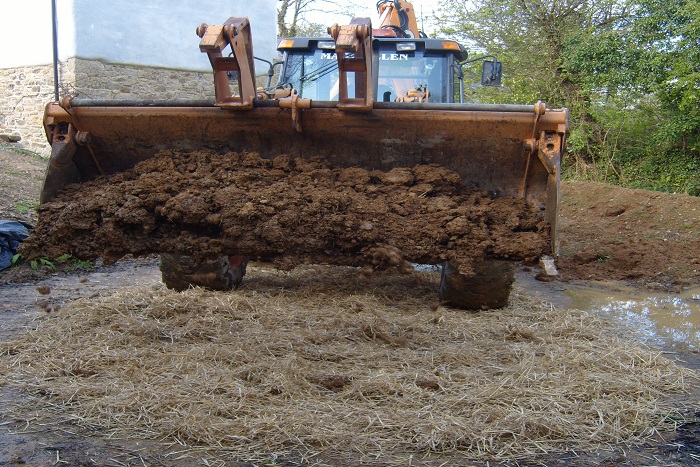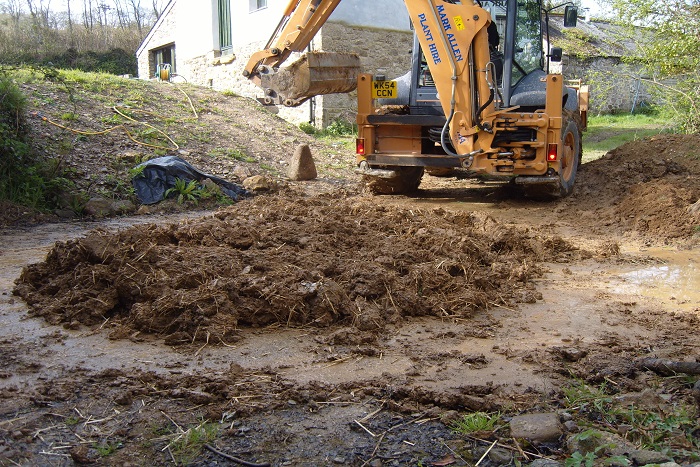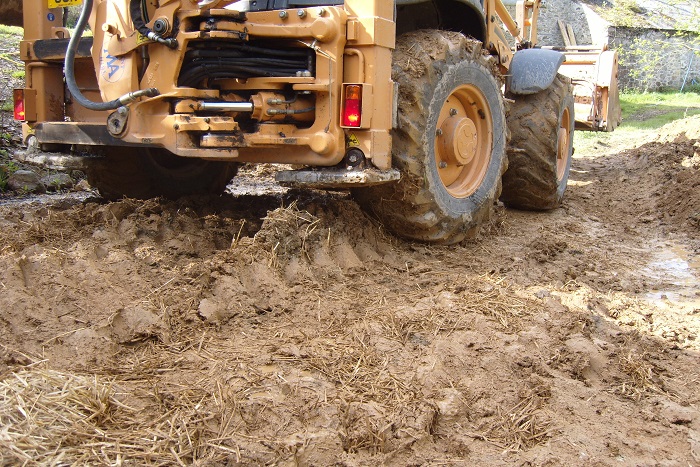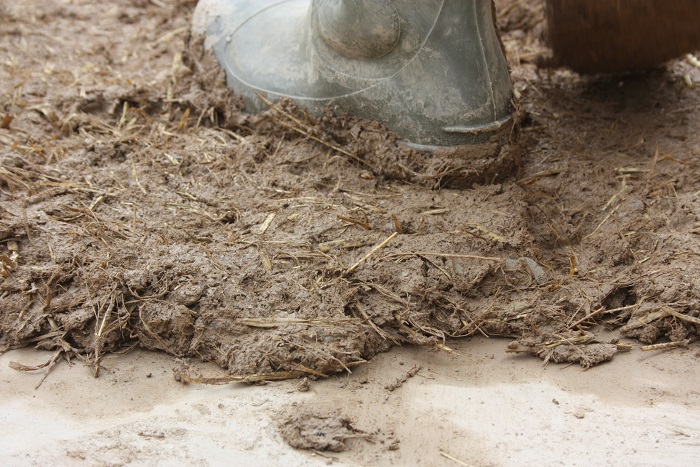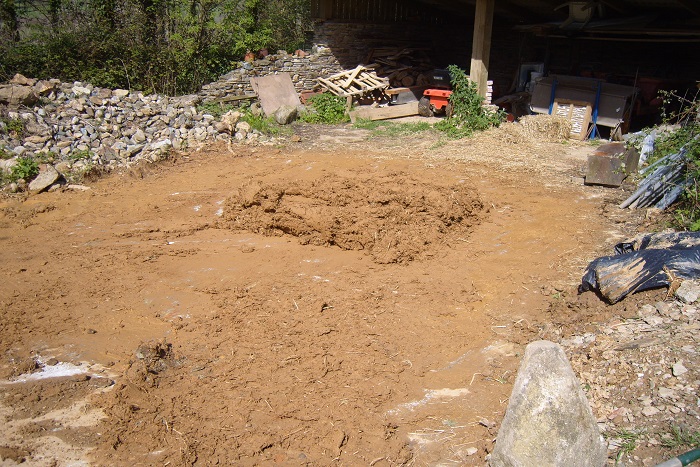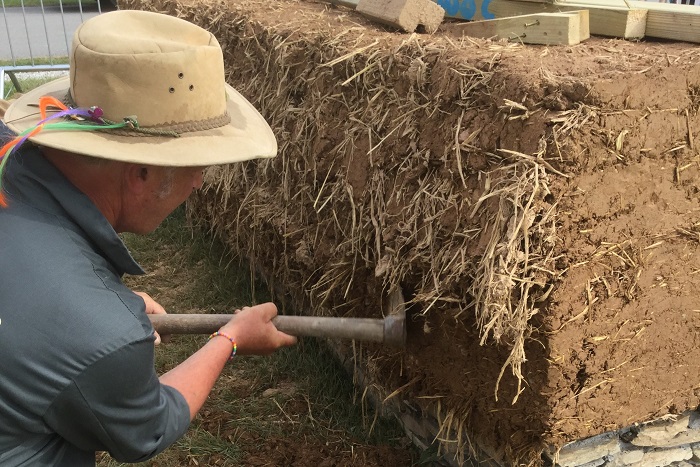Cob is a mixture of clayey sub-soil, straw and water.
When these elements are combined correctly they form a workable building medium.
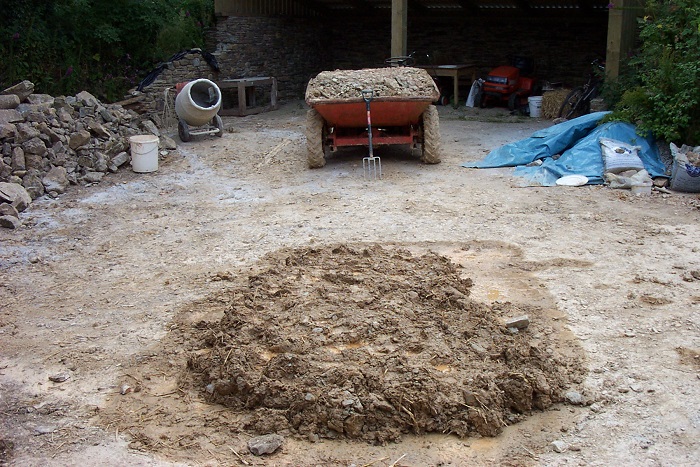
The characteristics of these elements, when successfully blended, deployed and established, will generate a homogenous material that is strong, insulative and unquestionably, sustainable.
As a guideline, the ratio of soil, straw and water = 4 – 3 – 1 by volume.
Commonly, all cob walling was/is built off of a stone plinth.
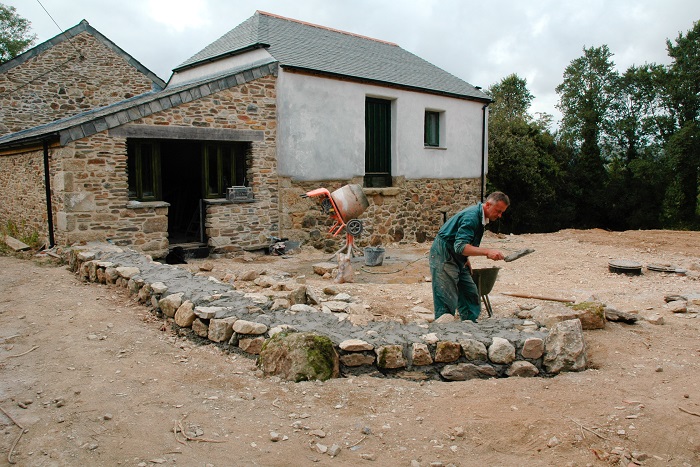
The plinth can vary in height, and tallness would have been [be] dependent on the availability and/or affordability of locally sourced stone.

Good practice nowadays would be a stone plinth constructed 450mm (min) from ground level.
INGREDIENTS
Clayey sub-soil:
Sub-soils vary in the amount of clay contained within them.
A suitable soil should consist of between 10% - 25% clay. The remainder being made up of stones, gravel, sands and silts.
Straw:
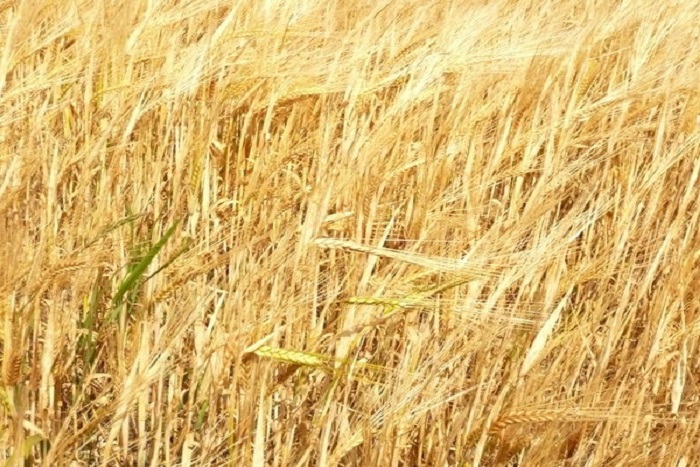
Used as a binder during the mixing process to assist manageability and to distribute shrinkage cracks through the drying process. Straw (commonly Barley) will also ensure that structural capabilities are achieved and to provide overall reinforcement of the wall mass.
Water:
An essential ingredient at the mixing stage to achieve a pliable and workable consistency.
MIXING
There are several methods of mixing, fundamentally however, all cob should be mixed by compaction.

Mixing by rotation (i.e. a conventional cement mixer) will not achieve a satisfactory amalgamation of ingredients and/or realise the necessary distribution of clay.
Historically, the fusing of these materials would have been accomplished by the trampling of cattle or oxen (farm labourers and builders would have been involved with the mixing too) within a designated area, close to the proposed construction site. Nowadays, and when large quantities are required, the use of mechanical assistance is considered to be a cost effective and efficient approach.
A reasonably large, hard surface - on a level plane - is required to facilitate mixing, especially so if mechanical assistance is to be used. Particularly important is a ‘level’ area. If ‘sloping’ ground has been adopted [for mixing], added water will almost certainly carry imperative clay and fine sands/silts away from the mixture.
Thorough wetting-down of the surface area (with a hosepipe or buckets), prior to and during mixing, will maintain an unbiased allocation of water holistically and reduce the probability of any ‘dry’ mixture being overlooked and subsequently being used in the construction.
Straw must be ‘teased’ onto the mixing area and not distributed in clumps, regardless of how mixing is undertaken, whether mechanically or manually, clumps of straw will not separate. The introduction of clumps of straw [to the construction] can lead to weak points within the walling and/or generate unwelcome hollows (notably to the elevation surfacing/s).
With the straw now suitably scattered, further wetting-down is required.
Sub-soil can now be distributed atop of the straw. Large stones, usually 50mm or more should be removed from the soil. There are several reasons why larger stones should not be incorporated into the wall construction;
- Natural shrinkage of drying cob will create pockets of air around the stones causing localised weaknesses within the structure.
- Larger stones may protrude from the elevation surfacing/s making ‘paring-back’ problematic
- Homogeneity can be reduced
The soil layer can now be thoroughly wetted-down.
Note; when wetting is required, during any stage of the process, good practice is to ensure the peripheral area of the mixing vicinity remains wet.
A final layer of straw can now be introduced and further wetting-down carried out.
MECHANICAL MIXING
Generally, most agricultural or construction plant vehicles can be used for mixing purposes. A swivel- bucket attachment (preferably with a grading-bucket) is decidedly advantageous.
Chiefly, the bigger the tyres the better! Steel-Tracked machines work equally well, however, caution must be observed when tracking back and forth (particularly on concrete surfaces) because underlying straw can be easily ruptured, thereby nullifying its primary function.
Driving [or tracking] backwards and forwards across the mixture will ensure adequate compaction of the soil and straw. More water may need to be added at this stage and can be administered locally (where appropriate) whilst the vehicle is in motion. As the mixture diffuses and spreads, maintaining a wet periphery is requisite to achieving a uniform distribution of water.
Several passes over the cob will be necessary.
Once sufficiently compacted with the first stage of tracking, the grading-bucket can now ‘drag’ the cob towards the middle, in a folding motion, to form a heap or mound.

The pile of cob can now be ‘pushed’ and ‘graded’ outwards.
Further tracking and folding will be required.
6 or 7 times is not uncommon.
When satisfied that the cob is mixed and constitutes an integrated, bonded mass, it can be ‘picked-up’ and stored…..ideally under a breathable covering (hessian is reliable) yet not susceptible and/or exposed to rainfall…..for the next days’ use.

MANUAL MIXING
There is no denying that mixing cob is labour intensive, whether it be by machine or ‘by hand’. If large quantities of cob are required it is no secret that mechanical sourcing, excavating and mixing is favoured. However, for smaller amounts, perhaps for a repair or small rebuild, it may be more cost effective to excavate and mix by hand (or foot!).

Similar to mechanical mixing sequences, soil is distributed and circulated between two layers of straw on wetted surfacing.

However, with a reduced volume of cob needed, compaction can be achieved by trampling or treading the mix. With sturdy boots, ‘heeling’ the cob,
despite being rather tiring, will achieve the same results. Folding the cob can be achieved using either a garden fork or spade. Allowing the cob to ‘stand’ still applies.
APPLICATION
A batch of newly mixed cob should be covered and left overnight for use the next day. Adopting this practice will allow the mixture to ‘mature’ or ‘stand’ affording a workable material for ease of management and appliance.
The cob can be either forked onto the wall by hand or transported to and placed atop of the wall with the aid of machinery.

Thereafter, the cob is compacted by foot.
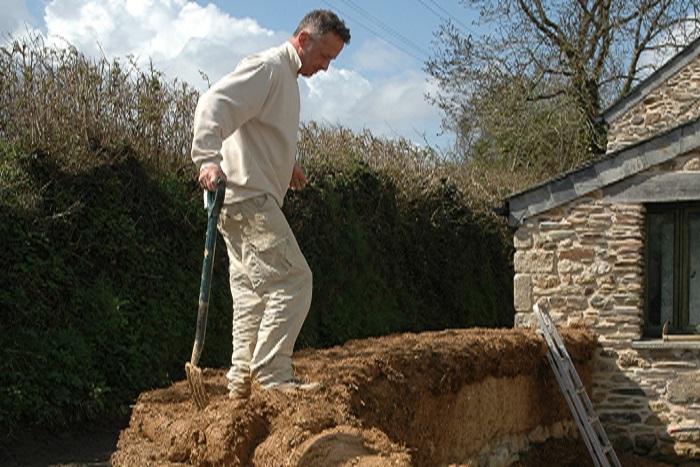
Dependent on the overall length of the wall to be constructed, several ‘layers’ of cob (approx. 100mm – 150mm) can be applied,
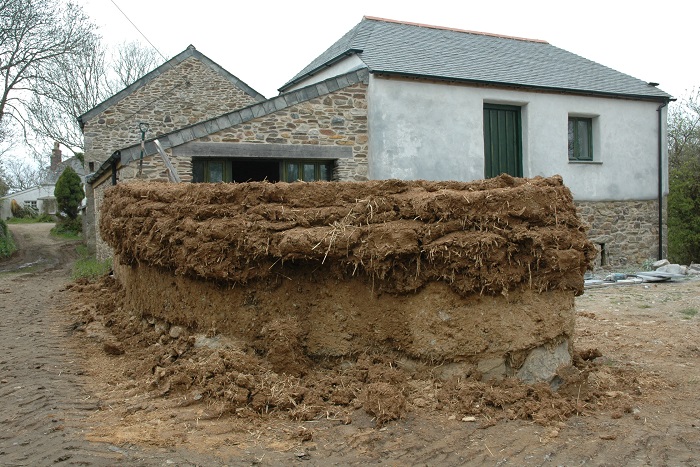
frequently achieving an end-of-day height of 500mm (or more).
Excess cob is pared-back the following day and the building process repeated.
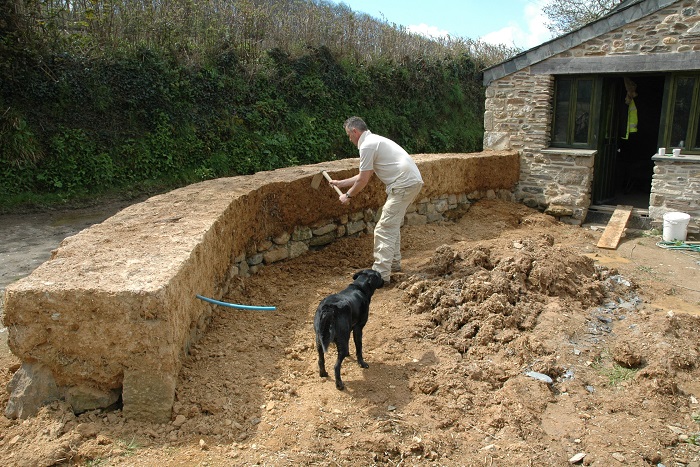
Cob Specialists Cornwall – Cob Repair Services Cornwall – Cob Surveys Cornwall – Cob Walls Cornwall – Building with Cob Cornwall – Cob Building Repairs Cornwall

